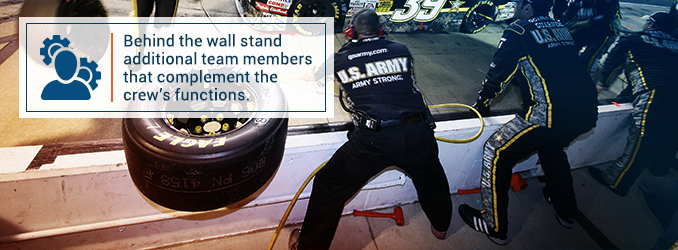Chapter 2: Structure of Race Car Pit Crews
Pit crews work to achieve competitive levels of efficiency and precision in the hope of giving their team’s driver the best chance at coming in first. This goal can only be achieved if a well-defined hierarchy and clear division of labor is established.
Accordingly, the way mechanics approached the vehicle was to become an important first step along the long road to success.
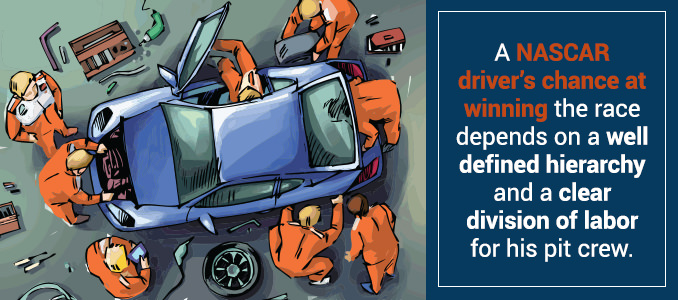
The Six-Man Pit Crew
Drivers rely on pit road and dip into it for a variety of reasons, both minor and major. If the sight of an incident-free race disappoints the crowds, it’s because the pit crews did their jobs. Their ability to avoid making mistakes under pressure remains a critical factor in reaching the 12-second target.
Fans of NASCAR will notice that maintenance personnel work in teams of six and go over the wall in a very specific order. This helps to ensure that each member gets to their mark at exactly the right time, ready to do what’s required.
 |
JackmanAs the first person to touch the vehicle, it’s the jackman’s responsibility to position a hydraulic jack underneath the 3,500 pound car and raise it up enough to grant the tire changers access. Once completed, the jackman will lower the body and move to the vehicle’s opposite flank and repeat the process. |
|
|
|
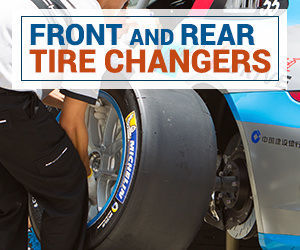 |
Front and Rear Tire ChangersUsing compressed air technology and pneumatic tools to remove five lug nuts per second, the front and rear tire changers are able to perform complete wheel replacements in nanoseconds, giving their team’s driver an edge during the upcoming laps. |
|
|
|
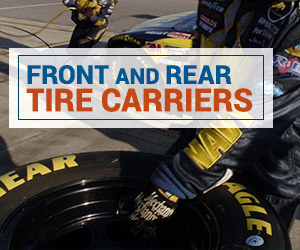 |
Front and Rear Tire CarriersThe two tire carrier positions require each mechanic to haul front and rear wheels from behind the wall and assist their respective tire changers. While the task may seem relatively unimportant, there would be no way a tire change could happen in time without their help. If necessary, front tire changers may apply tape to the grille to increase the downforce acting on the front of the car. However, this can restrict the airflow to the radiator, which may overheat as a result. Rear tire changers may undertake track bar adjustments to improve the car’s handling through turns and fix any problems with the vehicle’s suspension in the process. |
|
|
|
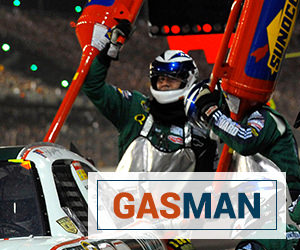 |
Gas ManThe gas man, holding two 12-gallon tanks that weigh 81 pounds each, fills the vehicle’s 18-gallon fuel cell at a rate of two gallons per second — 12 times faster than the flow rate at your local service station. NASCAR drivers lap the circuit at speeds of up to and in excess of 200 mph and as is to be expected, efficiency of fuel can affect the results of a race quite dramatically. |
Behind the Wall
While it might be the six-man crew that takes the glory on pit road, their efforts aren’t the only ones propelling a driver to victory lane. In fact, five other important responsibilities need to be filled to round out the team.
Support Crew
Remaining behind the wall are members of the support crew, who roll spare tires over to the front and rear tire carriers, retrieve racing gear and pneumatic tools and haul new fuel tanks towards the barrier.
According to the rules laid out by NASCAR, all support crew members are restricted to the “safe” side of the wall during pit stops.
The Utility Man
Also known as the “extra man,” the utility man is the unofficial seventh member of the team going over the wall. At NASCAR’s discretion, they are allowed to follow the pit crew to assist the driver and clean the windshield — but only during the second half of the race, and only if necessary.
They are not allowed to perform any other adjustments to the vehicle.
Crew Chief
The crew chief assumes the responsibility of coordinating the pit crew and conferring with the driver, all the while analyzing the televised broadcast of the race via flat-screen monitors installed throughout the pit box.
Other responsibilities include directing the actions of crew members, regardless of which side of the wall they’re on and ensuring people’s safety remains a top priority.
Car Chief
Working closely with the crew chief, the car chief is tasked with making sure the vehicle meets the criteria of NASCAR inspections. Car chiefs oversee any requested changes to the race car and are responsible for scheduling the majority of the day-to-day preparations ahead of the race weekend.
The Engineer
NASCAR has strict rules in place that govern the technical specifications for every car that qualifies to appear in the starting line-up.
The engineer is required to calculate the setup of the team’s vehicle — a process which outlines how each shock will be built, what springs will be used and what the best tire pressure will be based on the actual and potential conditions of the track.
Table of Contents
- The Tools of a NASCAR Pit Crew
- Introduction
- Chapter 1: A Brief History of Pit Crew Racing
- Chapter 2: Structure of Race Car Pit Crews
- Chapter 3: Anatomy of the 12-Second Pit Stop
- Chapter 4: The Sports Science Behind NASCAR
- Chapter 5: Evolution of Tools and Racing Equipment
- Chapter 6: Factors Affecting Podium Positions
- Chapter 7: The Future of Pit Crews
- Conclusion: NASCAR as a National Phenomenon


